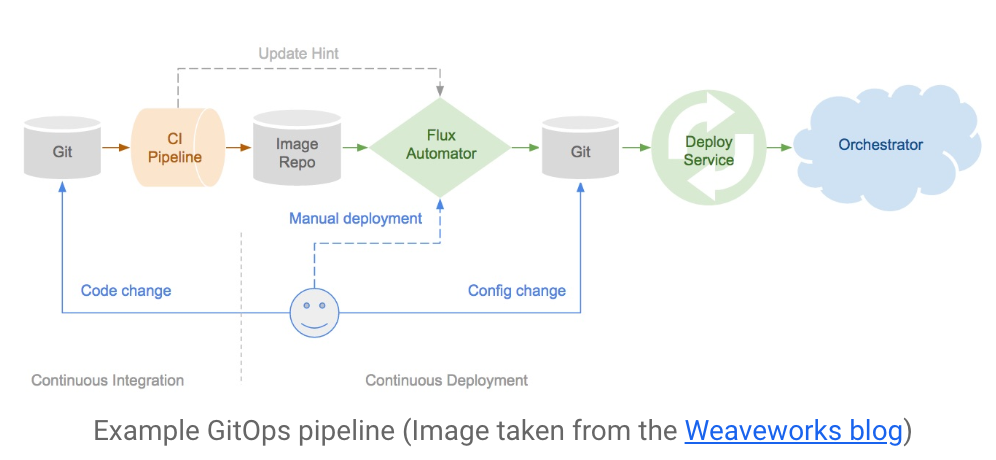
In general, there are two ways to deploy infrastructure changes:
- Procedural way: telling some tool what to do, e.g.: Ansible (a glorified SSH). This is also known as a push model.
- Declarative way: telling some tool what you want to have done, also known as infrastructure as code, e.g.: Terraform and Pulumi.
GitOps is a term created by WeWorks and works by using Git as a source of truth for declarative infrastructure and applications. Automated CI/CD pipelines roll out changes to your infrastructure after commits are pushed and approved in Git. This model is becoming a popular operating way for building applications on Kubernetes.

In GitOps you only push code. The developer interacts with the source control, which triggers the CI/CD tool (e.g. Jenkins or CicleCI), and this pushes the docker image to the container register (e.g. docker hub). So you can see the Docker image as an artifact!
To deploy that Docker image, you have a different config repository which contains the k8s manifests. The CI/CD tool sends a pull request, and when it is merged, a magic pod in the k8s cluster pulls the image to the cluster (similar to kubectl apply, the popular k8s management tool, or even helm update, another popular k8s production tool).
Everything is controlled through pull requests. You push code, not containers.
Wait, but what is this magic pod? Glad you ask: the magic is performed by a tool called Flux, which automatically ensures that the state of a cluster matches the config in Git. It uses an operator in the cluster to trigger deployments inside Kubernetes, which means you don't need a separate CI/CD tool. It monitors all relevant image repositories, detects new images, triggers deployments, and updates the desired running configuration based on that.
So, ultimately, the key advantages of GitOps models are: increased productivity and stabilities, higher reliability, and standardization. But mostly, no more manual kubectl commands anymore!